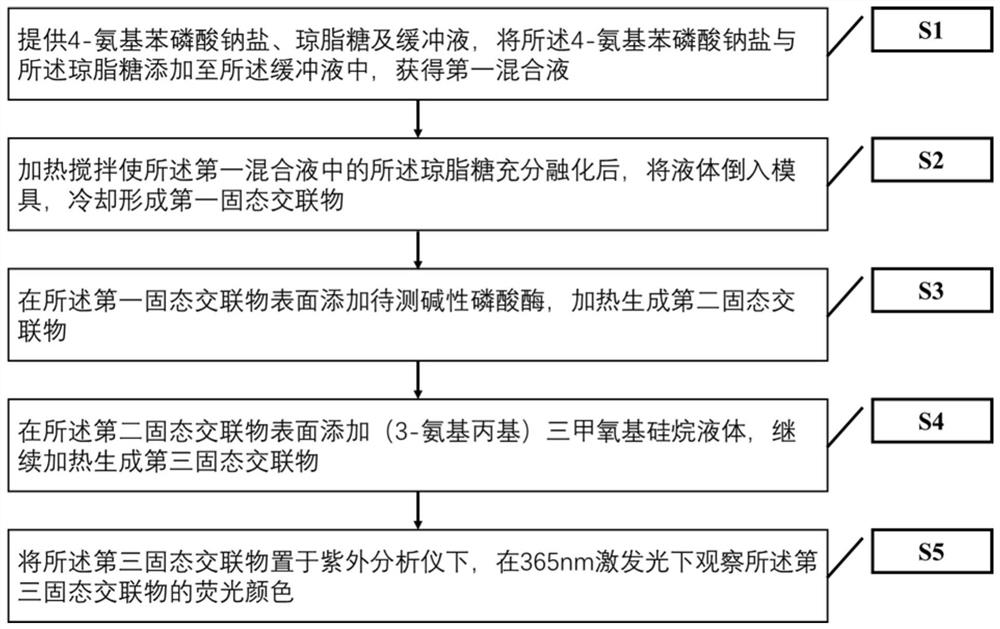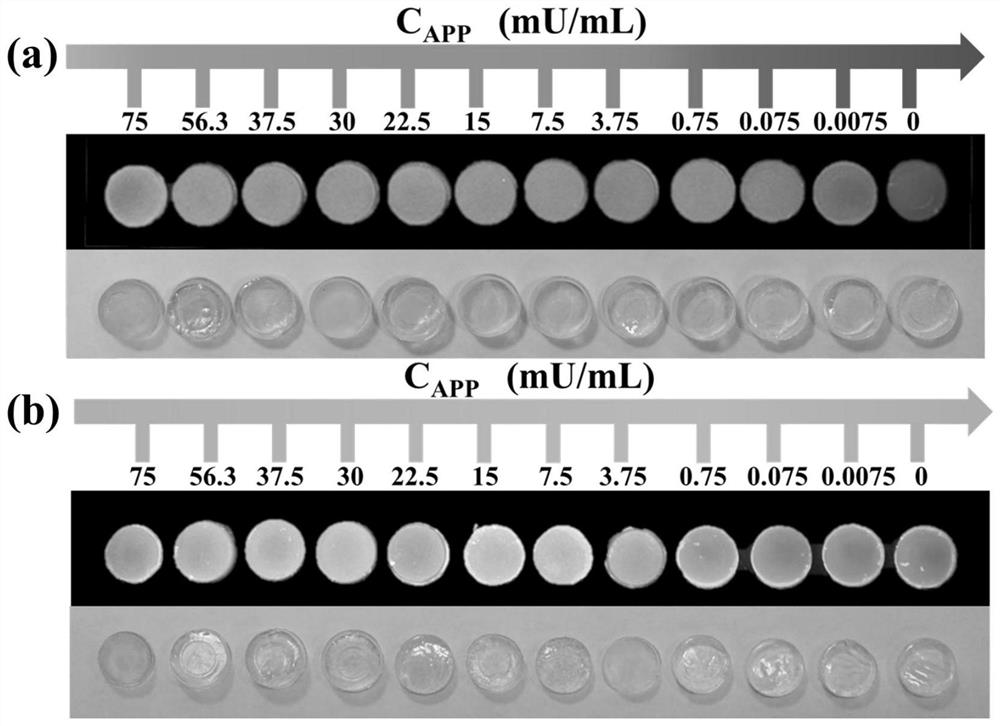Visual detection method for alkaline phosphatase detection
A detection method, phosphatase technology, applied in the field of enzyme detection, can solve the problems of time-consuming, poor stability, high cost of noble metal nanoclusters, and achieve broad application prospects and simple steps
- Summary
- Abstract
- Description
- Claims
- Application Information
AI Technical Summary
Problems solved by technology
Method used
Image
Examples
Embodiment 1
[0036]Add 0.9 mL of 4-aminophenylphosphate sodium salt (25 mM) and agarose with a mass of 1% of the first mixed solution to 1.5 mL of buffer to obtain the first mixed solution; put it into a magnetic stirring electric heating mantle , after heating and stirring at 160° C. to fully melt the agarose in the first mixed solution, pour the liquid into multiple molds, each mold is filled with 240 μL of the mixed solution, and cooled at room temperature to form the first solid-state cross-linked product; 150 μL of standard alkaline phosphatase with different concentrations were added dropwise to the first solid-state cross-linked product, and heated at 70° C. for 105 min to form a second solid-state cross-linked product; each drop-wise added to the second solid-state cross-linked product 210μL of (3-aminopropyl)trimethoxysilane liquid was heated at 70°C for 80min to generate a third solid-state cross-linked product; finally, the third solid-state cross-linked product was placed under ...
Embodiment 2
[0039] Further, in the method for detecting alkaline phosphatase proposed in the present invention, step S2a can also be performed after step S1 is completed: adding a reference substance to the fourth mixed solution. These reference substances are at least one of rhodamine, fluorescent carbon quantum dots, fluorescent silicon quantum dots, and fluorescent CdTe quantum dots, and the reference substances appear red under ultraviolet light, and these reference substances react with each other under ultraviolet light. The light blue fluorescence of the product CDs showed obvious differences, which can be used as a reference to build a ratiometric fluorescence detection platform to improve the visualization effect. Most preferably, the concentration of the reference substance in the reaction system is 0.025 mg / mL.
[0040] After adding the reference substance for reaction, the third solid-state cross-linked substance was placed under the ultraviolet analyzer, and its fluorescence ...
PUM
 Login to View More
Login to View More Abstract
Description
Claims
Application Information
 Login to View More
Login to View More - R&D
- Intellectual Property
- Life Sciences
- Materials
- Tech Scout
- Unparalleled Data Quality
- Higher Quality Content
- 60% Fewer Hallucinations
Browse by: Latest US Patents, China's latest patents, Technical Efficacy Thesaurus, Application Domain, Technology Topic, Popular Technical Reports.
© 2025 PatSnap. All rights reserved.Legal|Privacy policy|Modern Slavery Act Transparency Statement|Sitemap|About US| Contact US: help@patsnap.com


